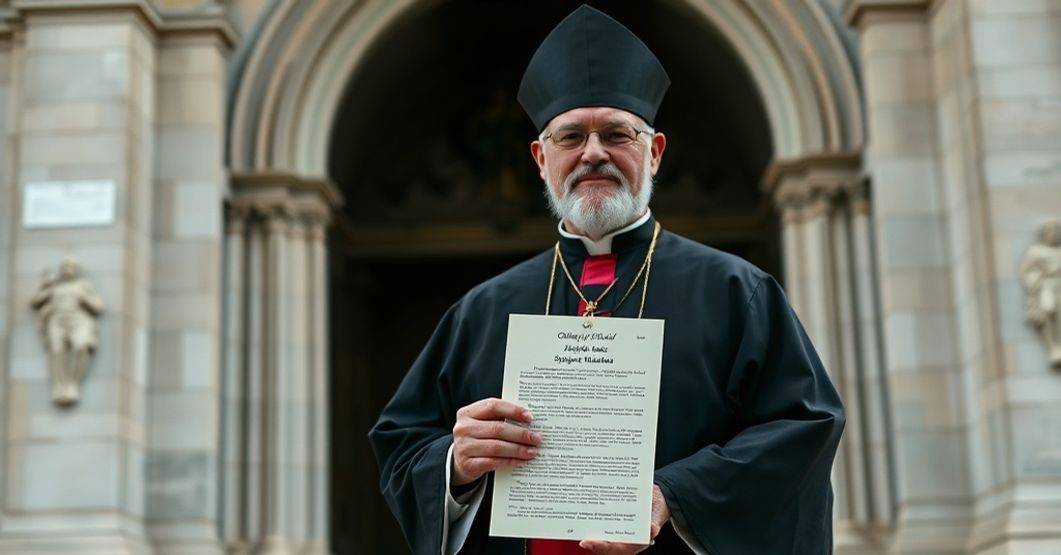Antipopes of the Antichurch



















Timeline of this heretical pontiff
Encyclical Letters
+ 15 posts1959
+ 7 posts1961
+ 4 posts1962
+ 2 posts1963
+ 2 postsApostolic Exhortations
+ 3 postsApostolic Constitutions
+ 93 posts1958
+ 6 posts1959
+ 87 postsMotu Proprio
+ 15 posts1958
+ 1 posts1959
+ 1 posts1962
+ 11 postsApostolic Letters
+ 151 posts1958
+ 4 posts1959
+ 63 posts1960
+ 78 posts1961
+ 1 posts1962
+ 4 posts1963
+ 1 postsSpeeches
+ 99 posts1958
+ 2 posts1959
+ 26 posts1960
+ 29 posts1961
+ 16 posts1962
+ 24 postsMessages
+ 6 posts1959
+ 4 postsHomilies
+ 4 postsLetters
+ 152 posts1958
+ 1 posts1959
+ 48 posts1960
+ 32 posts1961
+ 31 posts1962
+ 30 posts1963
+ 10 postsNot categorized
+ 1 posts1958
+ 1 postsNews feed


Si ingratae mentis (1959.05.11)
Dated 11 May 1959, this Latin letter of antipope John XXIII to Antonio Caggiano and the other Argentine hierarchy commemorates two anniversaries: the centenary of formal diplomatic relations between the Holy See and Argentina, and the 25th anniversary of Pius XI’s reorganization of the ecclesiastical structure in that country. It praises Argentina as a Christian nation, exalts the post-1929 ecclesiastical expansion (parishes, churches, clergy, religious, Catholic Action, schools, hospitals), encourages civil and ecclesiastical authorities to deepen collaboration with the Roman See, and bestows an “apostolic blessing” as a pledge of divine favor.


A A A La Ioannes XXIII (1959.05.24)
Venerable Benedict Aloisi Masella is congratulated on his eightieth birthday and fortieth episcopal anniversary; the conciliar court of John XXIII encourages solemn local celebrations in Palestrina, the erection of a marble monument in honor of the Blessed Virgin Mary, the renewal of public consecration to her Immaculate Heart, and grants, through Aloisi Masella, a plenary indulgence attached to a pontifical Mass celebrated on the designated day. All is expressed in impeccably courteous Latin, presenting John XXIII as benevolent pastor and Rome as dispenser of spiritual favors. This seemingly harmless epistolary compliment is, in reality, a concentrated symptom of the new religion: the polite ceremonial façade hides the usurpation of authority, the instrumentalization of Marian devotion, and the replacement of the true Roman Church by a paramasonic apparatus celebrating itself.


Epistula ad Ludovicum Severinum Haller… (1959.05.25)
The Latin letter under consideration is a brief congratulatory message of John XXIII to Louis Severin Haller, titular bishop of Bethlehem and abbot primate of the Canons Regular of St. Augustine, on the 900th anniversary of the 1059 Lateran Synod and the public inauguration of the confederation of the congregations of the Order. It recalls Augustinian origins, praises the canonical life, invokes the reforming decrees of 1059 on common life, extols communal discipline, obedience, charity, and urges the Canons to foster liturgy, pastoral work, and studies for the good of the Church. Beneath this apparently edifying surface, the text functions as a programmatic instrument of the conciliar revolution, neutralizing authentic reform, instrumentalizing a venerable order for the coming neo-church, and evacuating supernatural Catholicity into a safe, obedient, liturgical decor for apostasy.


Abeunte tibi (1959.06.14)
This Latin letter of John XXIII to Aloysius Stepinac, on the 25th anniversary of his episcopal consecration, is a brief congratulatory message praising Stepinac’s constancy, piety, pastoral zeal, and sufferings under communist persecution, recalling his appointment and elevation to the cardinalate by Pius XII, and imparting a so‑called “Apostolic Blessing” upon him and the clergy and faithful of Zagreb. The entire text, however, by coming from the first public acts of the conciliar usurper and by its studied silences, functions as a pious veil over the already ongoing revolution that would soon betray precisely the Kingship of Christ and the rights of the Church for which Stepinac had suffered.
Varia
Announcement:
– News feed –implemented
– Antipopes separate web sites with their all documents refutation – in progress
